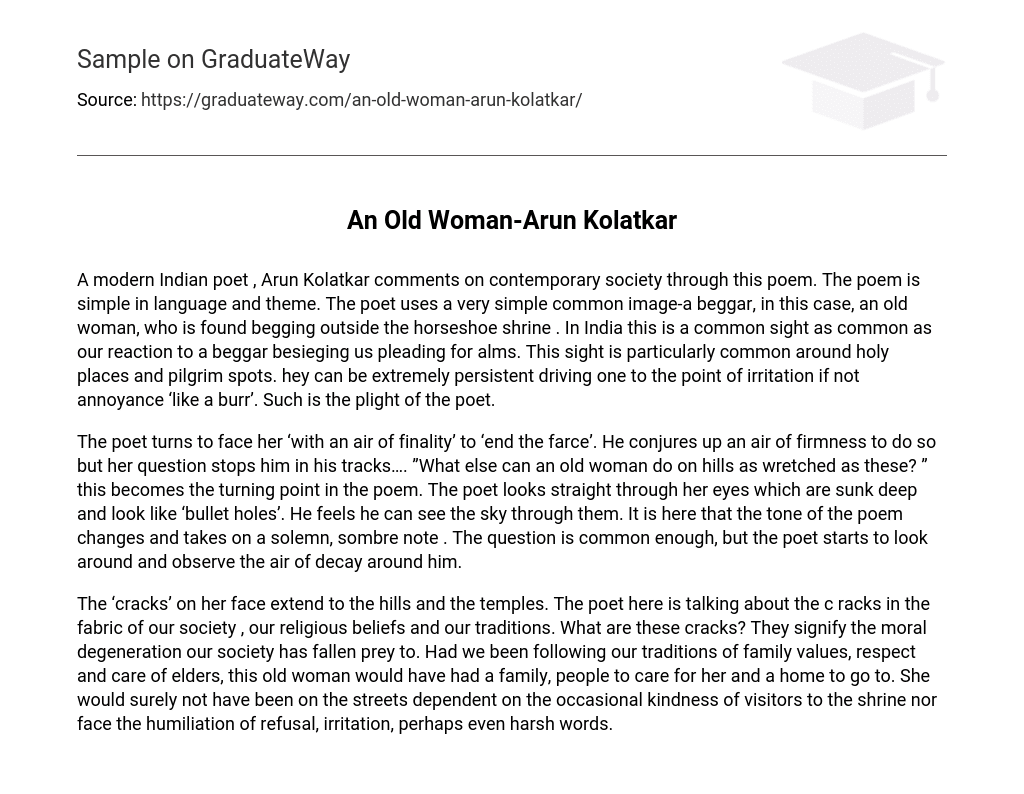A modern Indian poet , Arun Kolatkar comments on contemporary society through this poem. The poem is simple in language and theme. The poet uses a very simple common image-a beggar, in this case, an old woman, who is found begging outside the horseshoe shrine . In India this is a common sight as common as our reaction to a beggar besieging us pleading for alms. This sight is particularly common around holy places and pilgrim spots. hey can be extremely persistent driving one to the point of irritation if not annoyance ‘like a burr’. Such is the plight of the poet.
The poet turns to face her ‘with an air of finality’ to ‘end the farce’. He conjures up an air of firmness to do so but her question stops him in his tracks…. ”What else can an old woman do on hills as wretched as these? ” this becomes the turning point in the poem. The poet looks straight through her eyes which are sunk deep and look like ‘bullet holes’. He feels he can see the sky through them. It is here that the tone of the poem changes and takes on a solemn, sombre note . The question is common enough, but the poet starts to look around and observe the air of decay around him.
The ‘cracks’ on her face extend to the hills and the temples. The poet here is talking about the c racks in the fabric of our society , our religious beliefs and our traditions. What are these cracks? They signify the moral degeneration our society has fallen prey to. Had we been following our traditions of family values, respect and care of elders, this old woman would have had a family, people to care for her and a home to go to. She would surely not have been on the streets dependent on the occasional kindness of visitors to the shrine nor face the humiliation of refusal, irritation, perhaps even harsh words.





